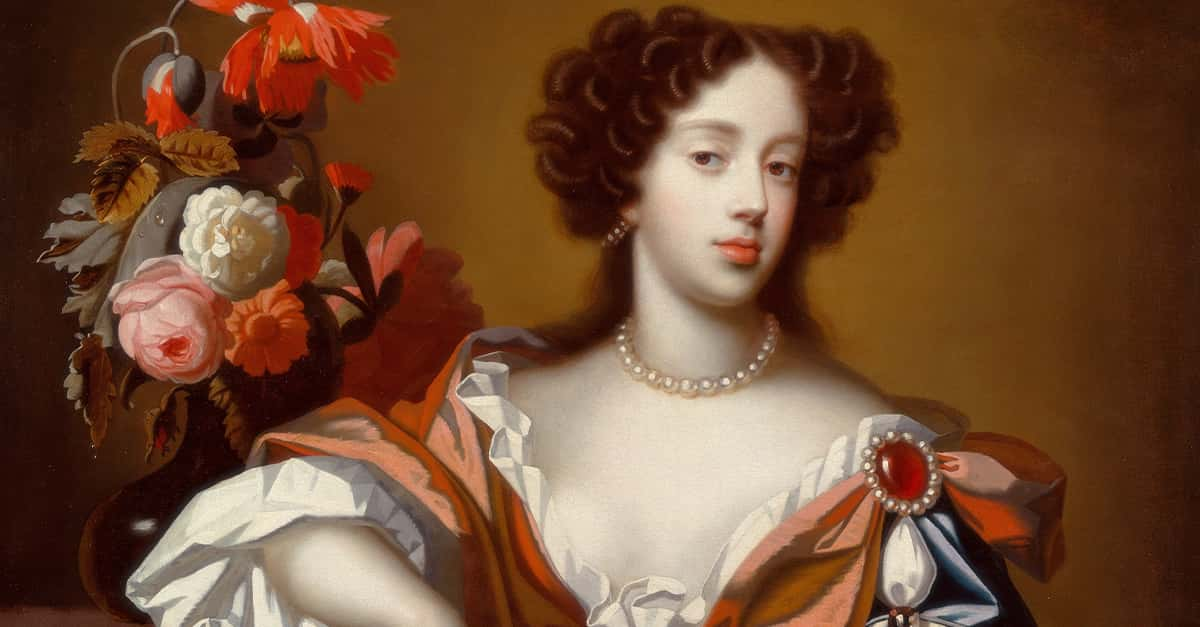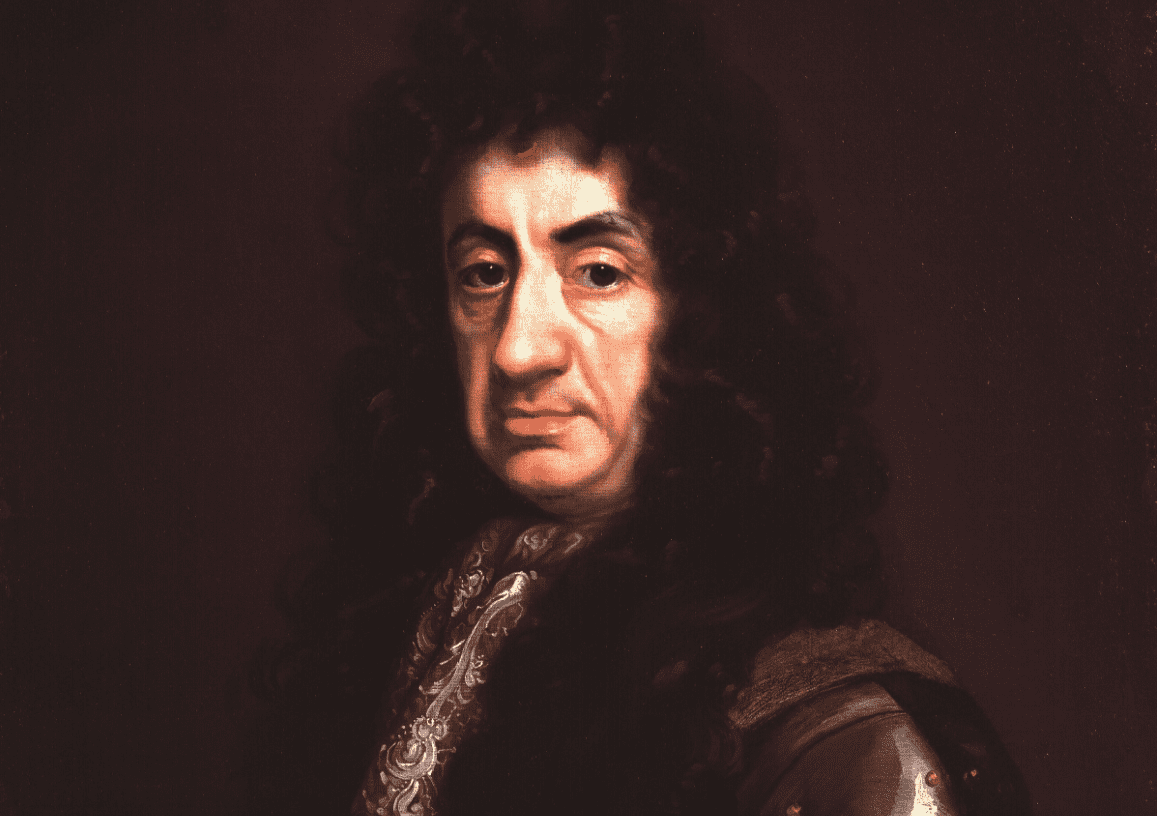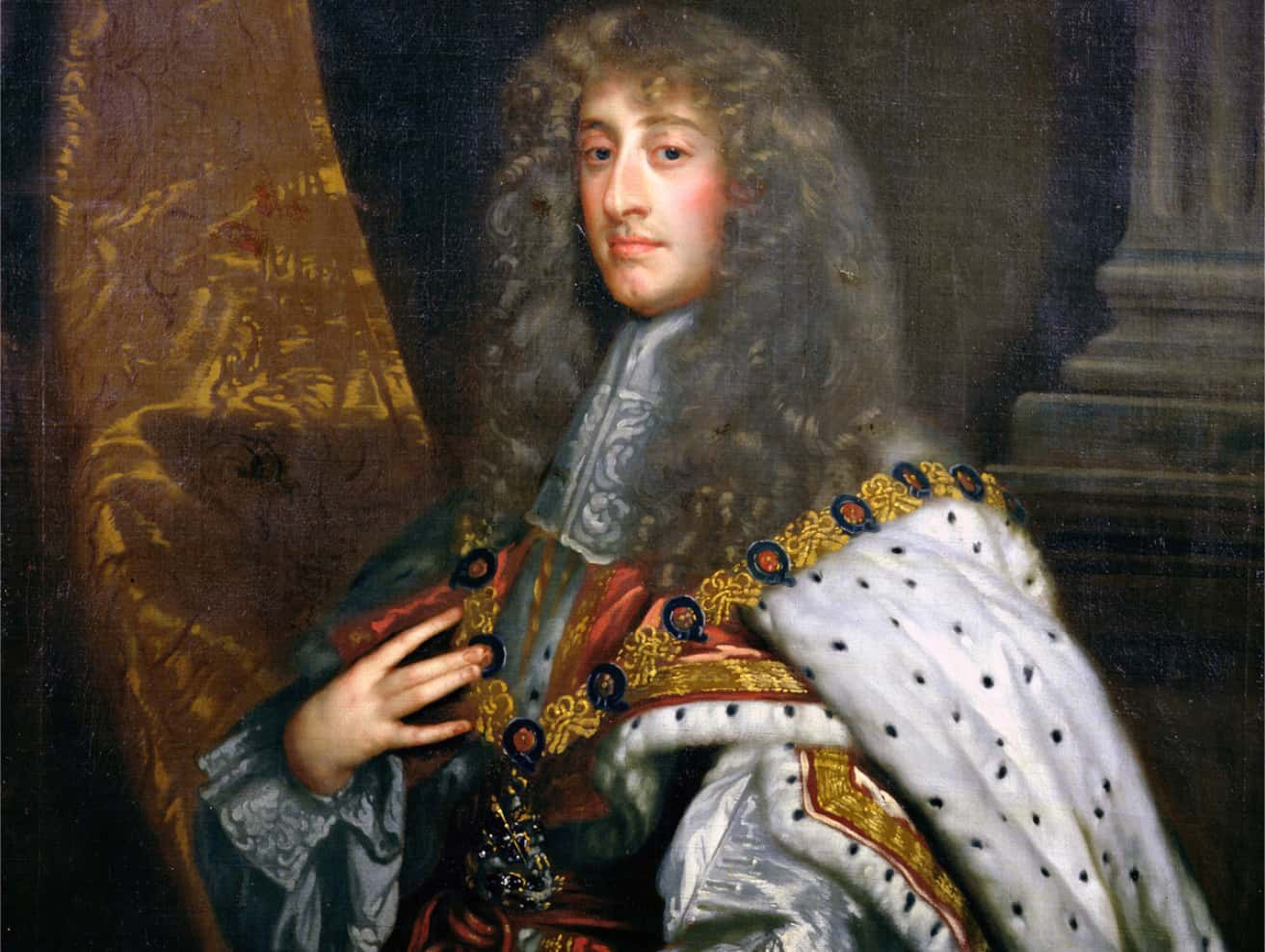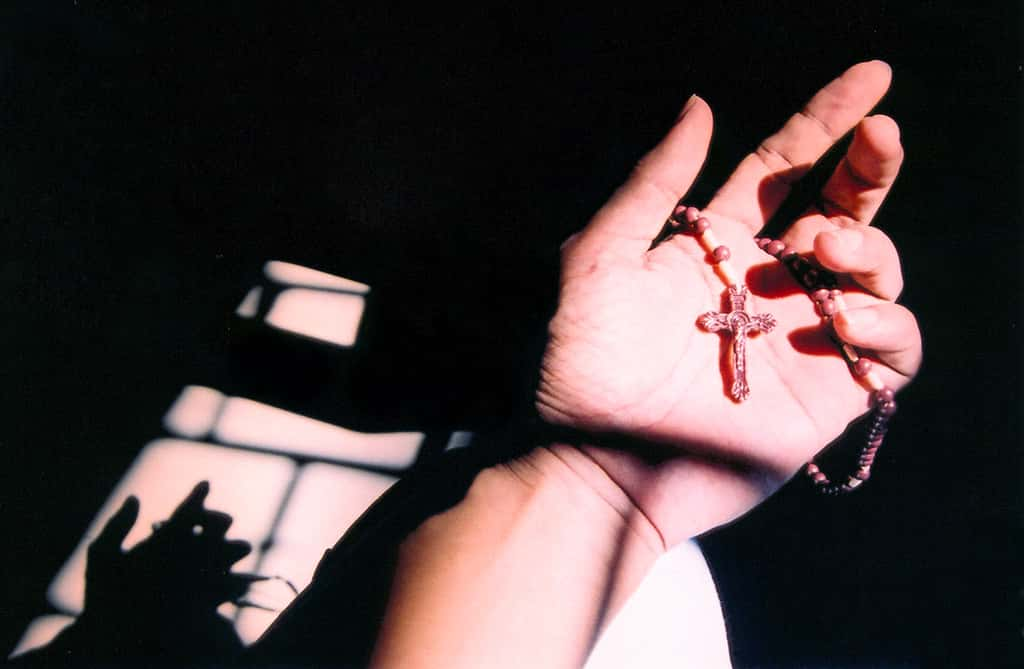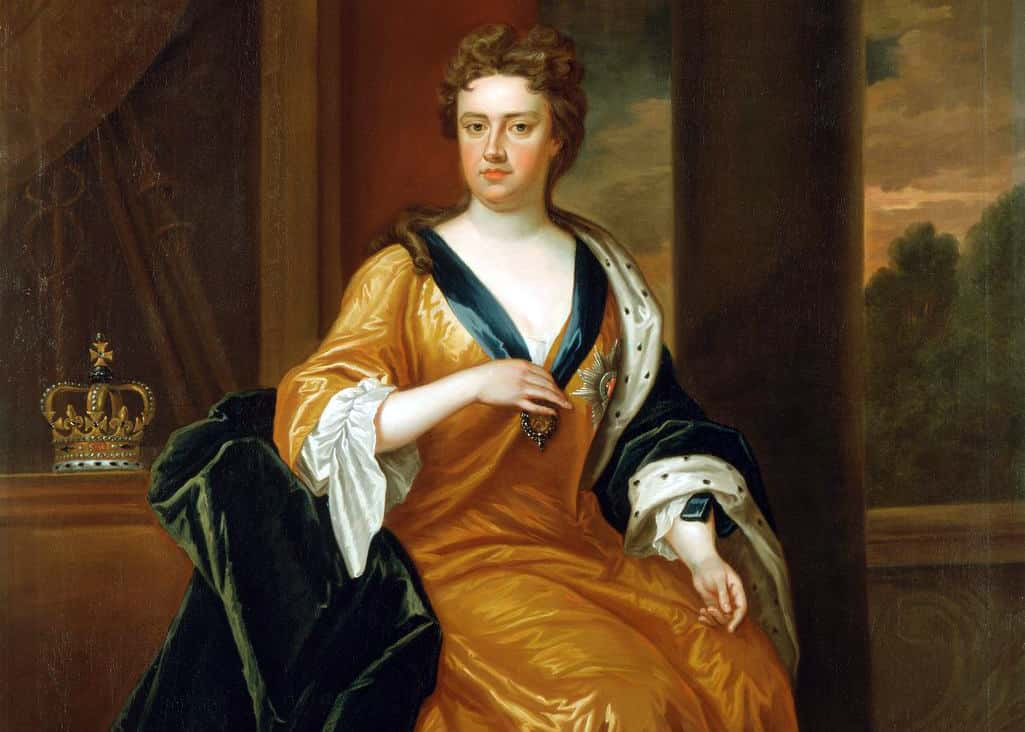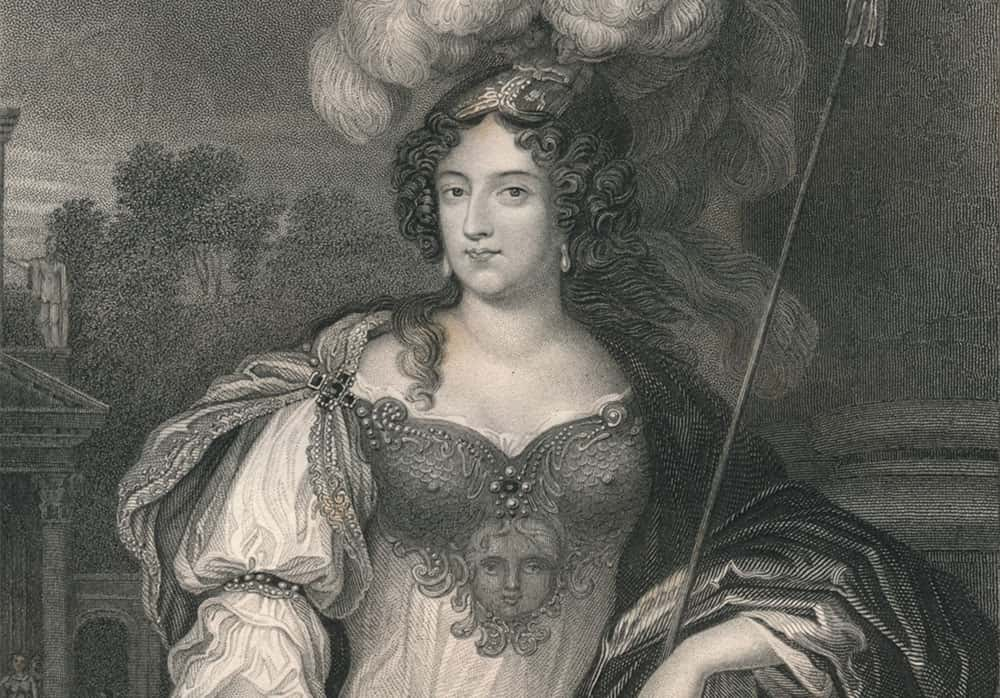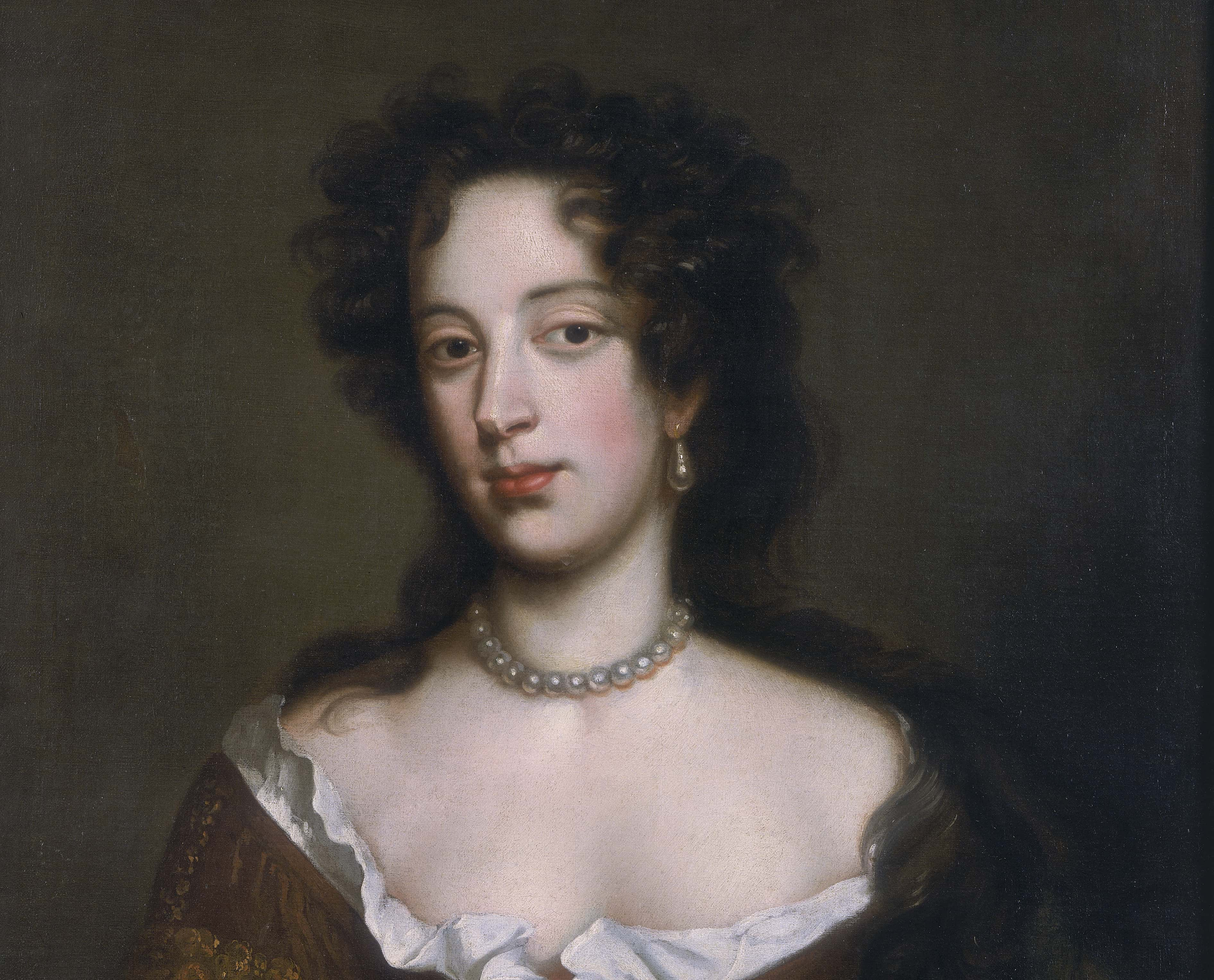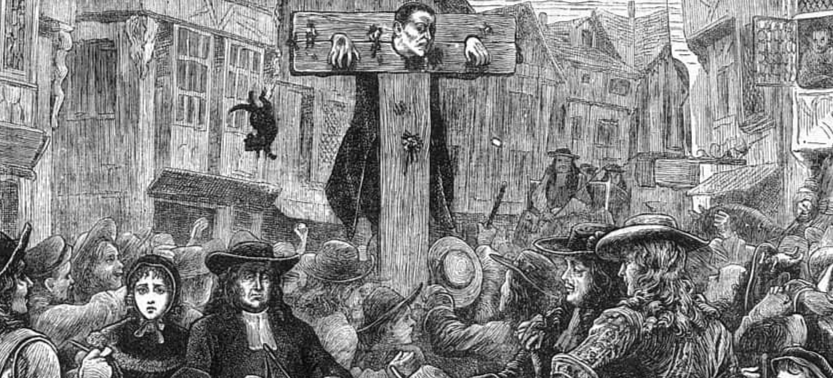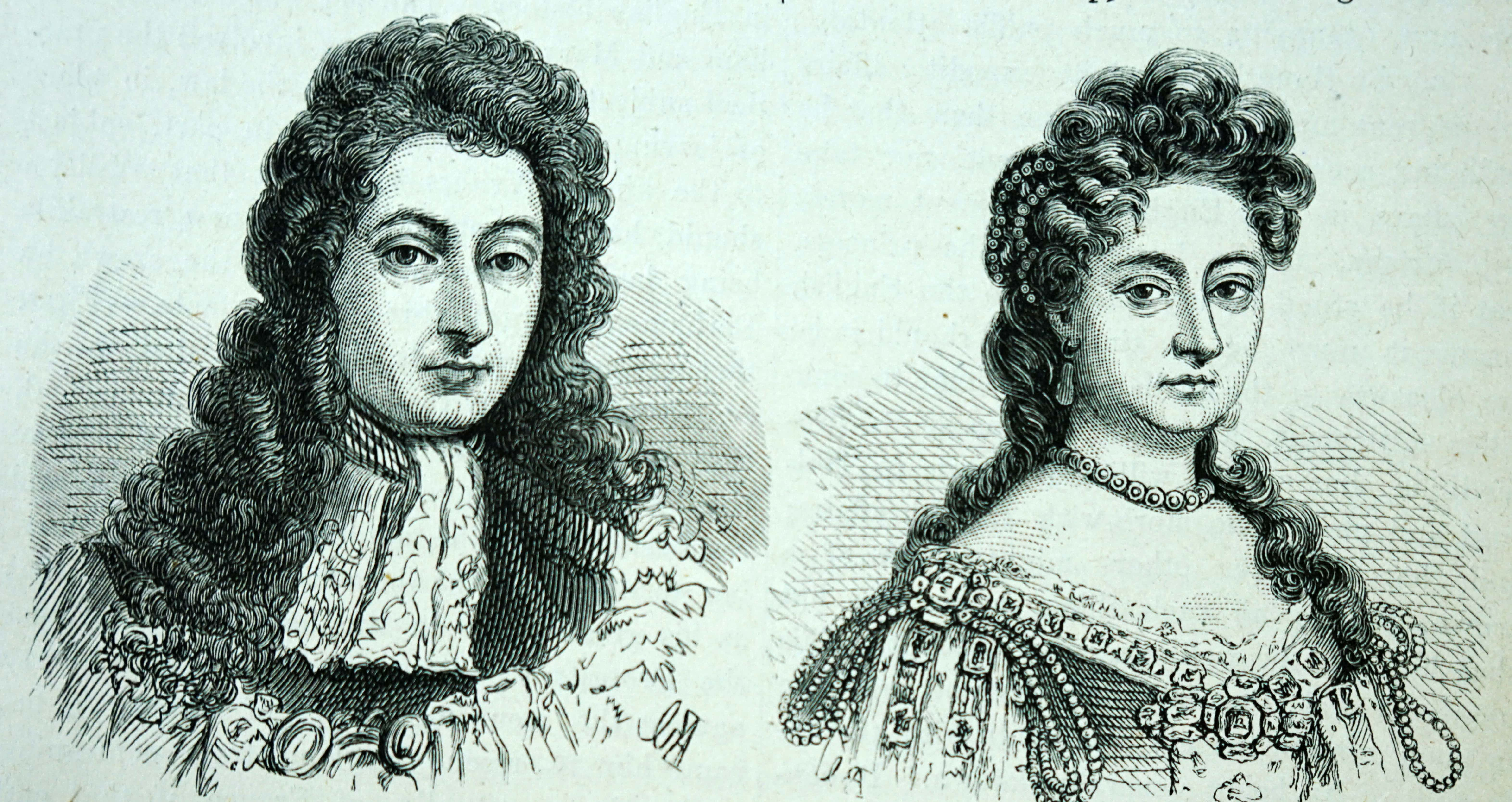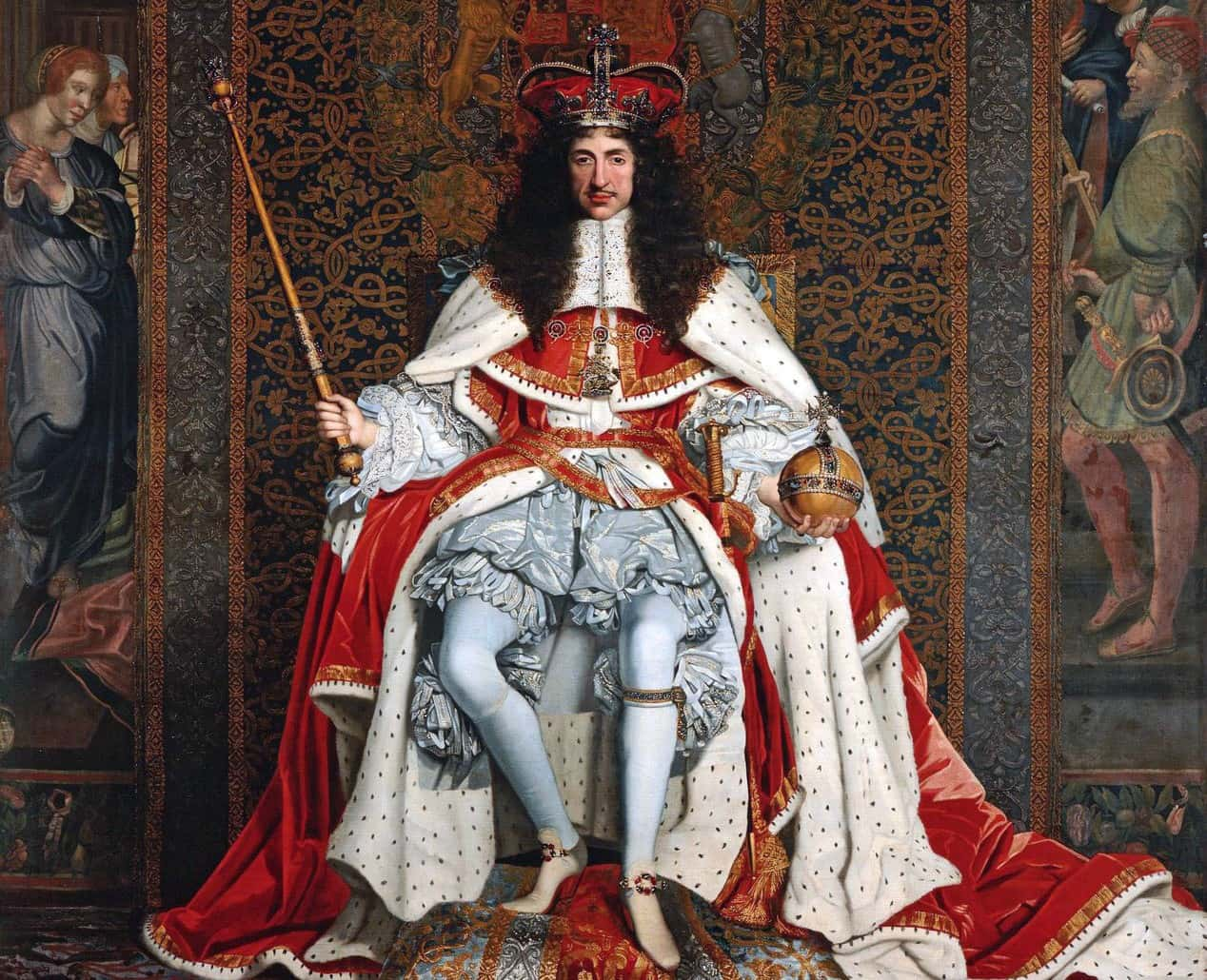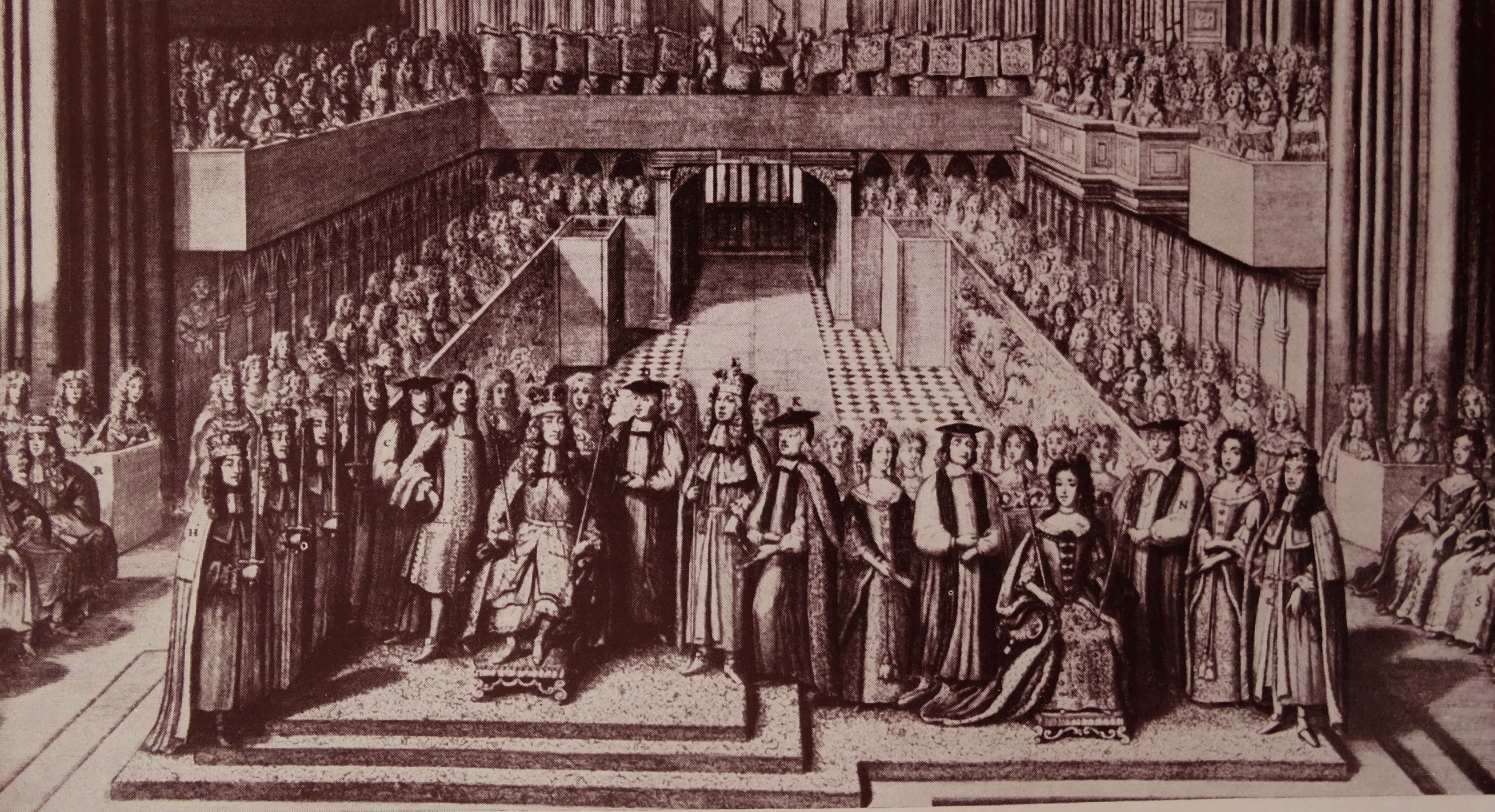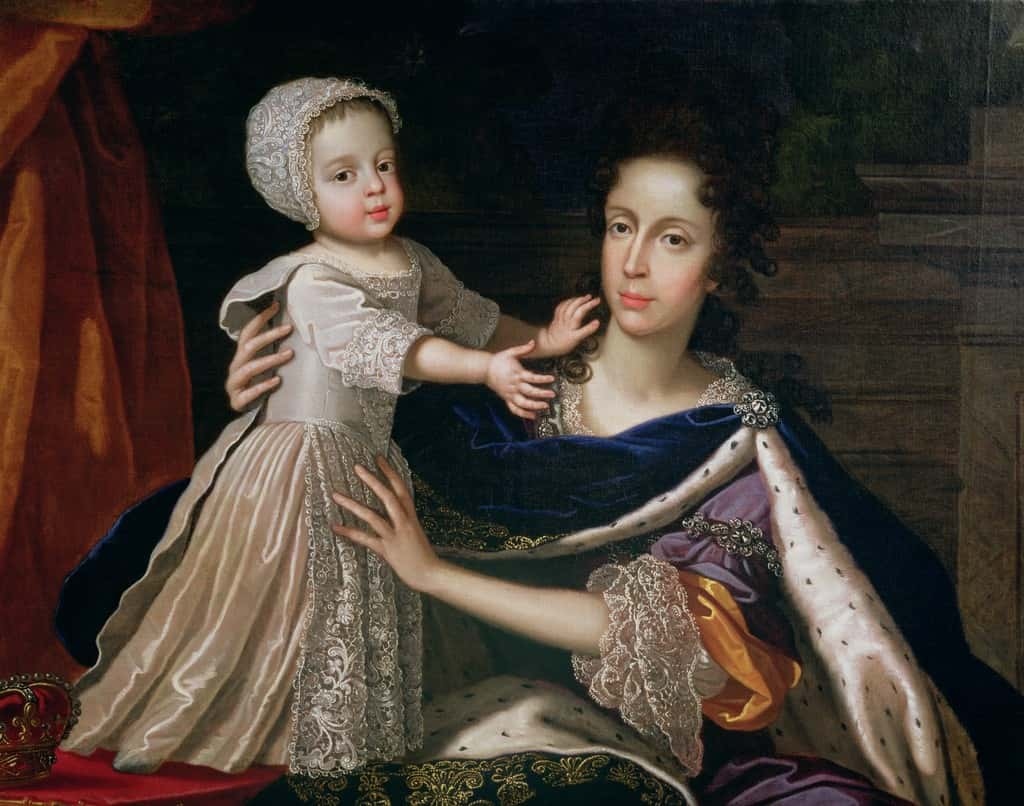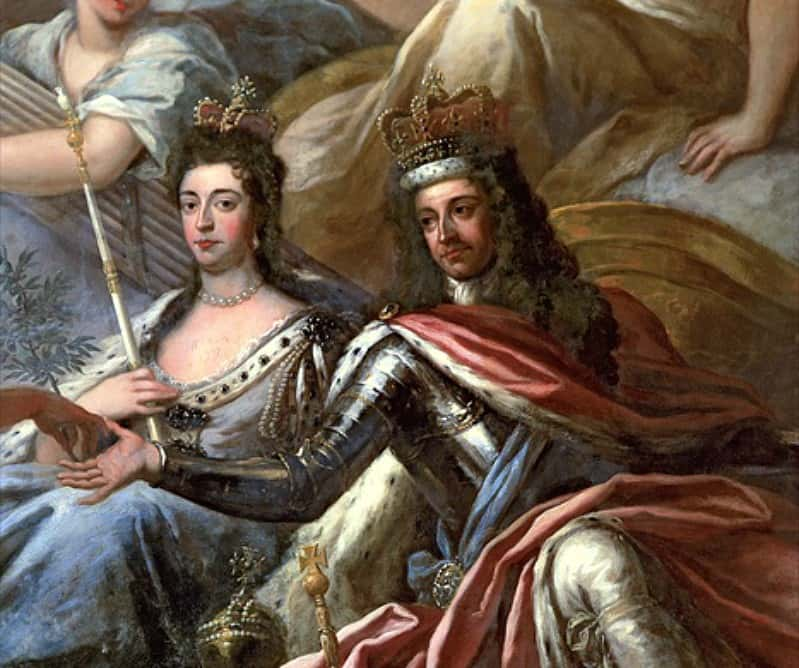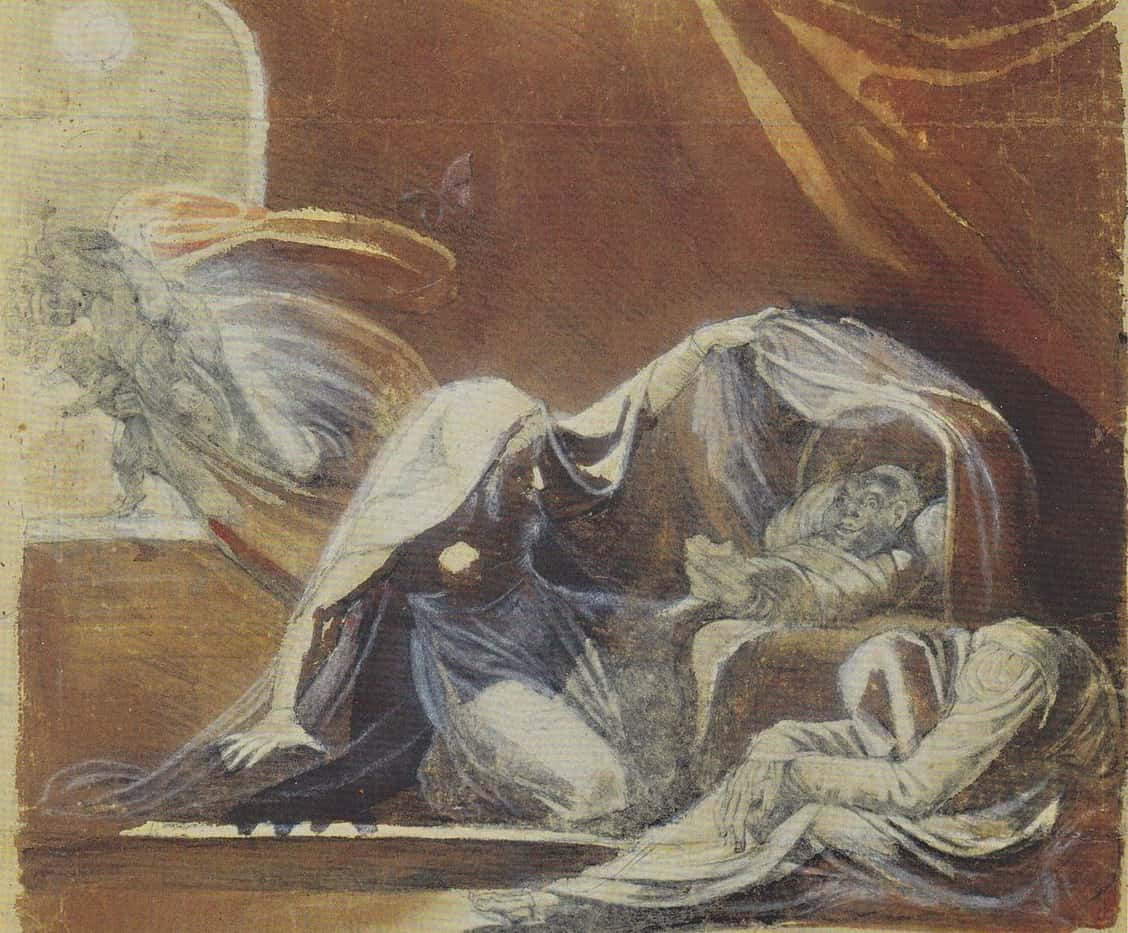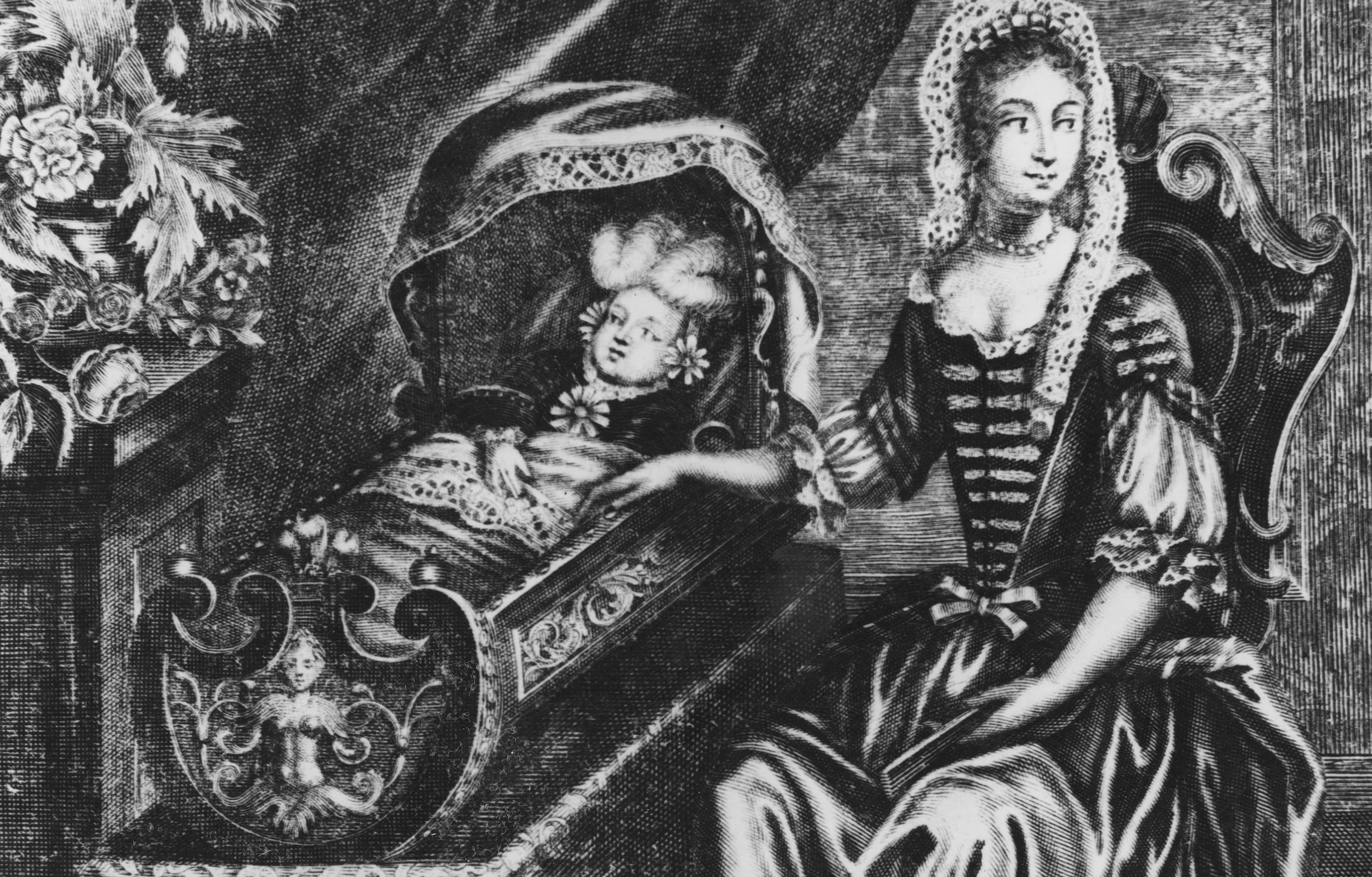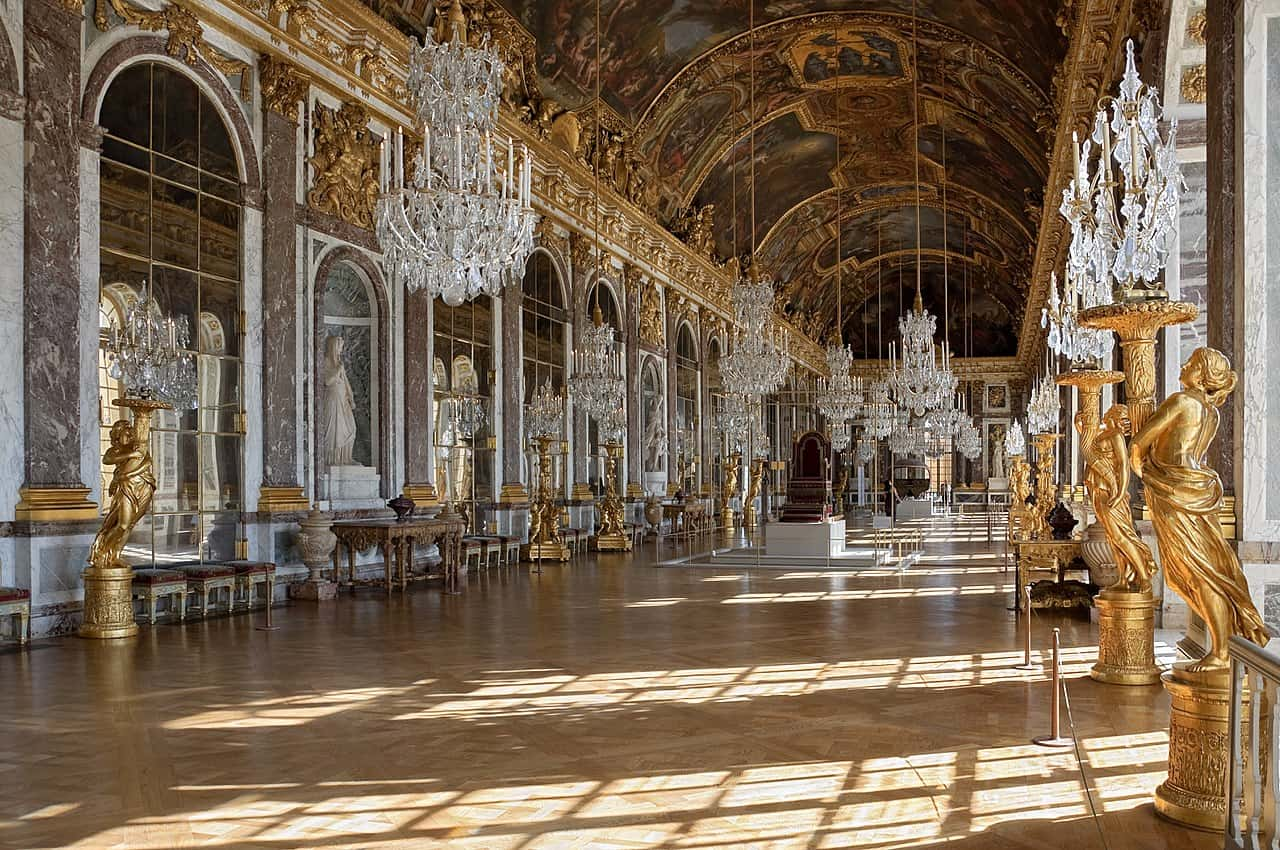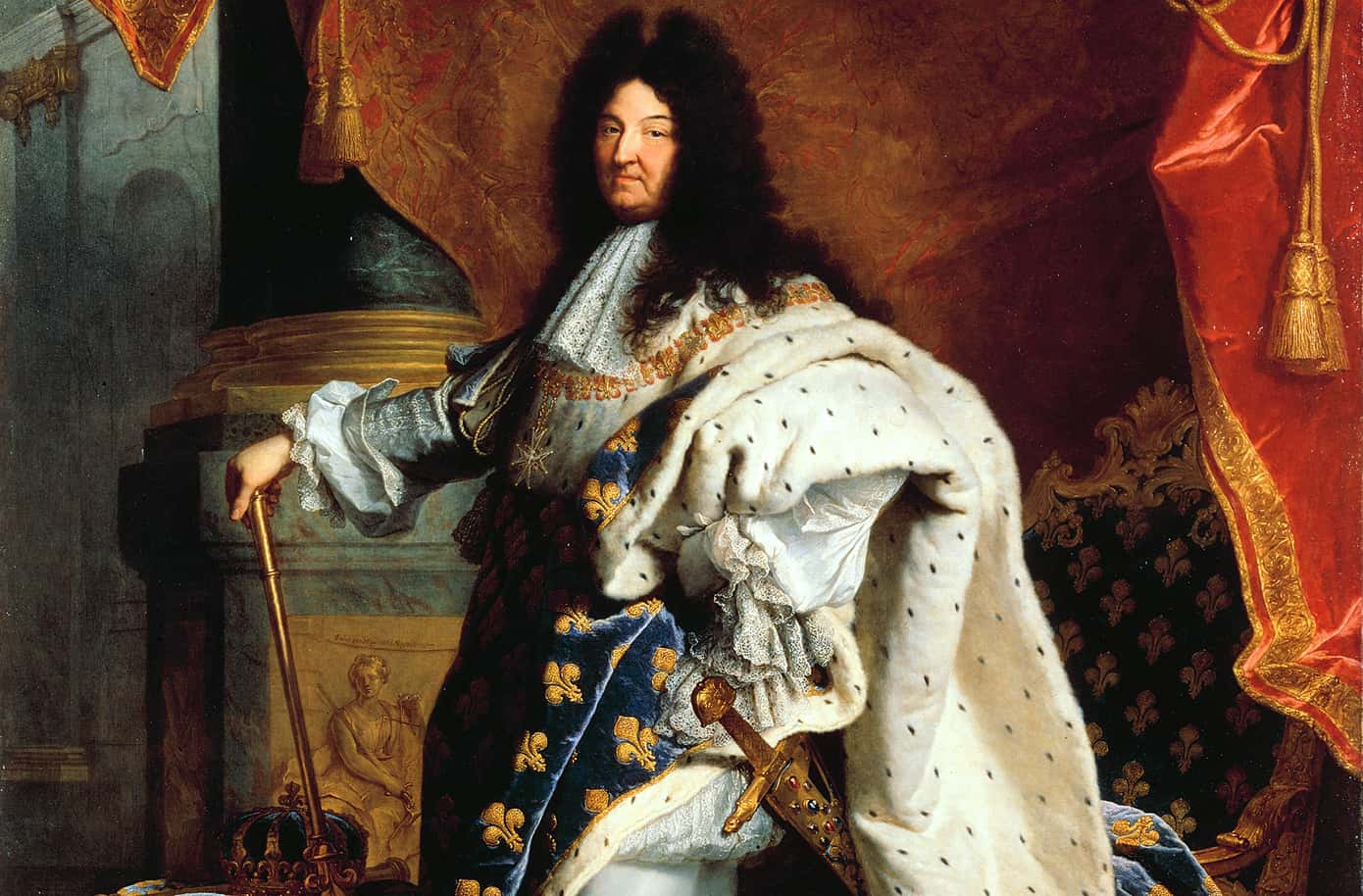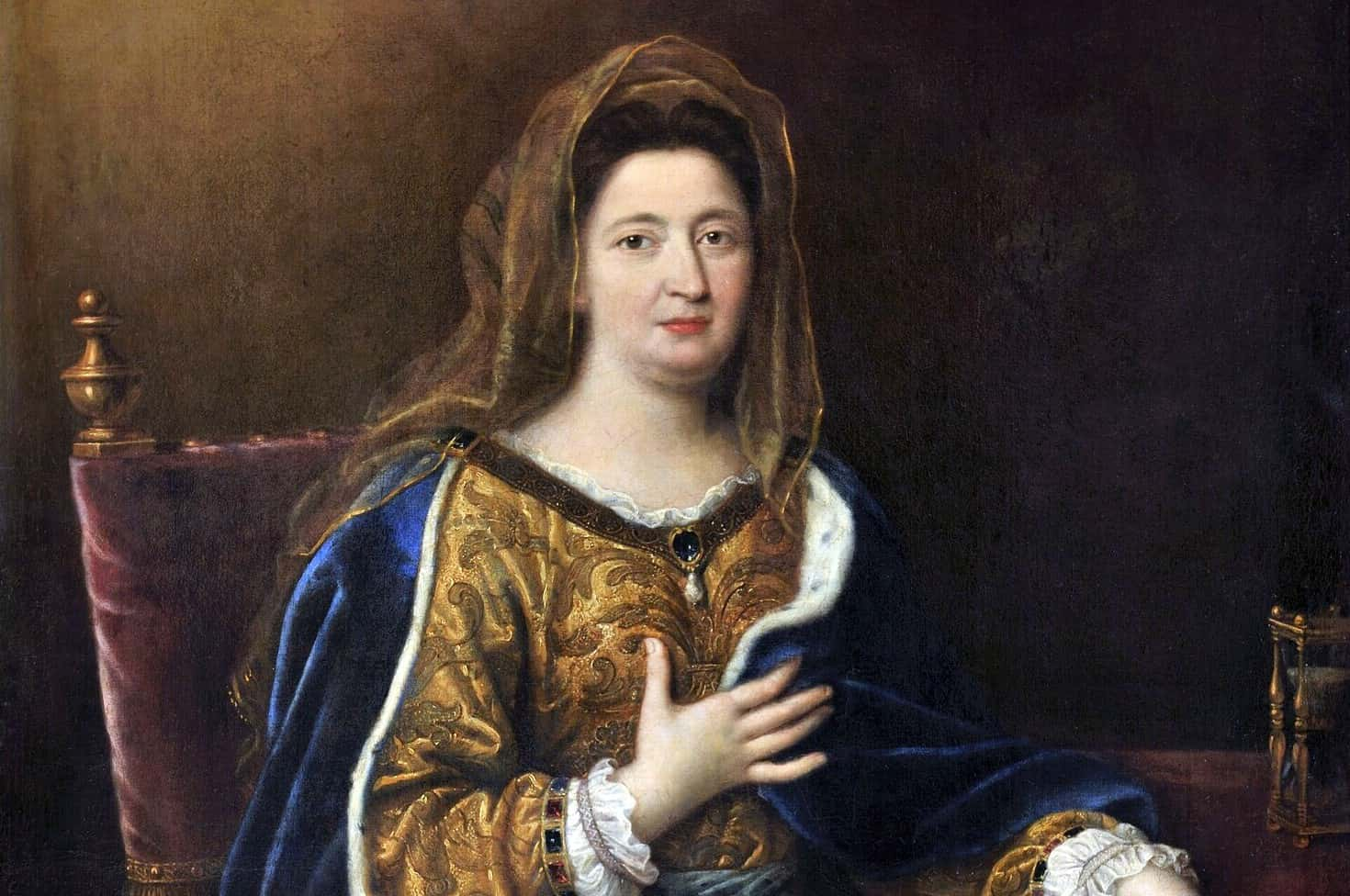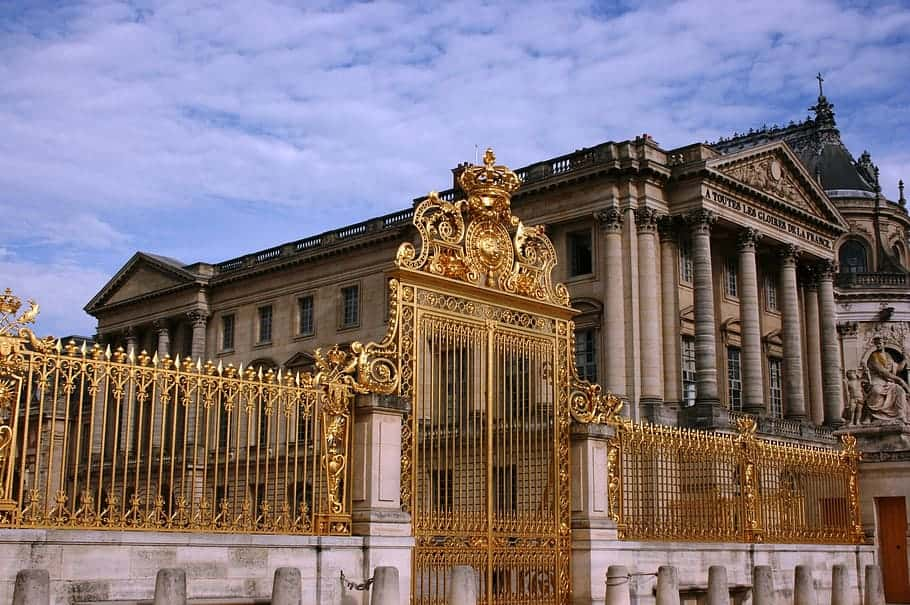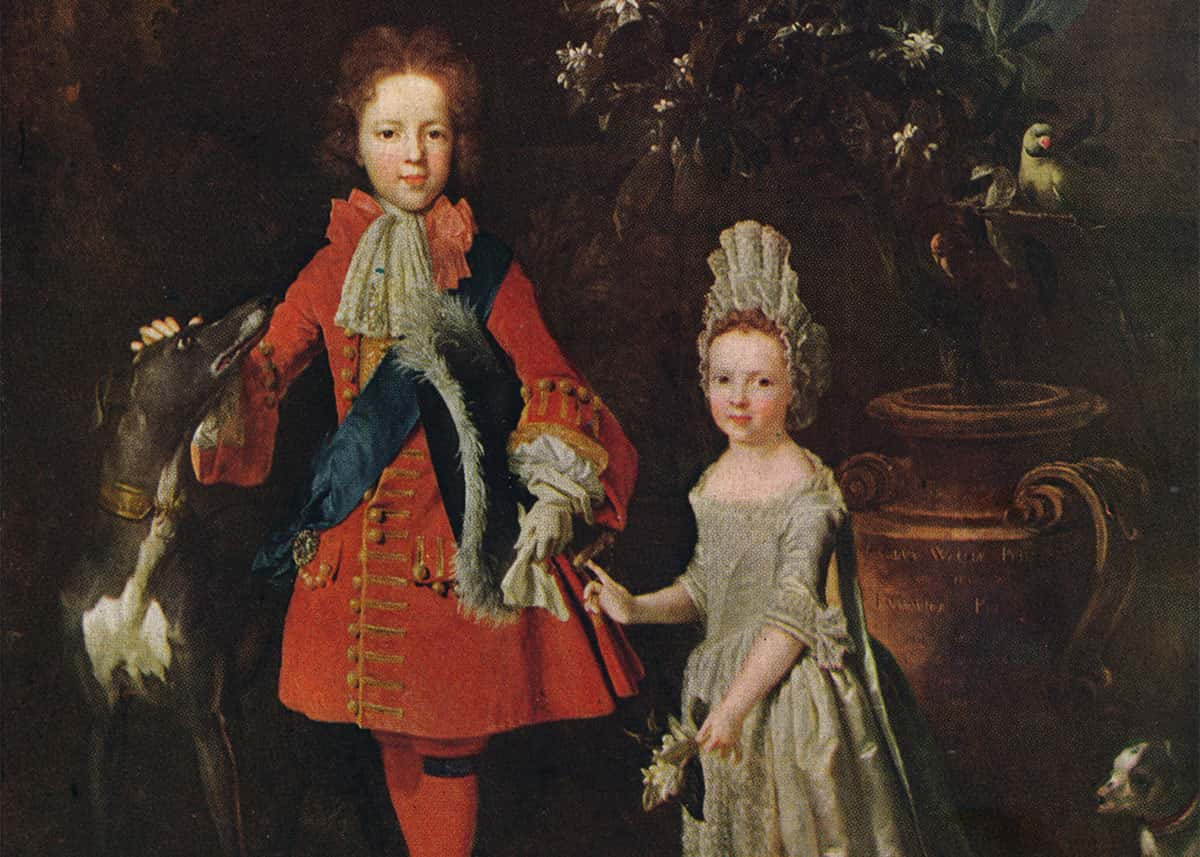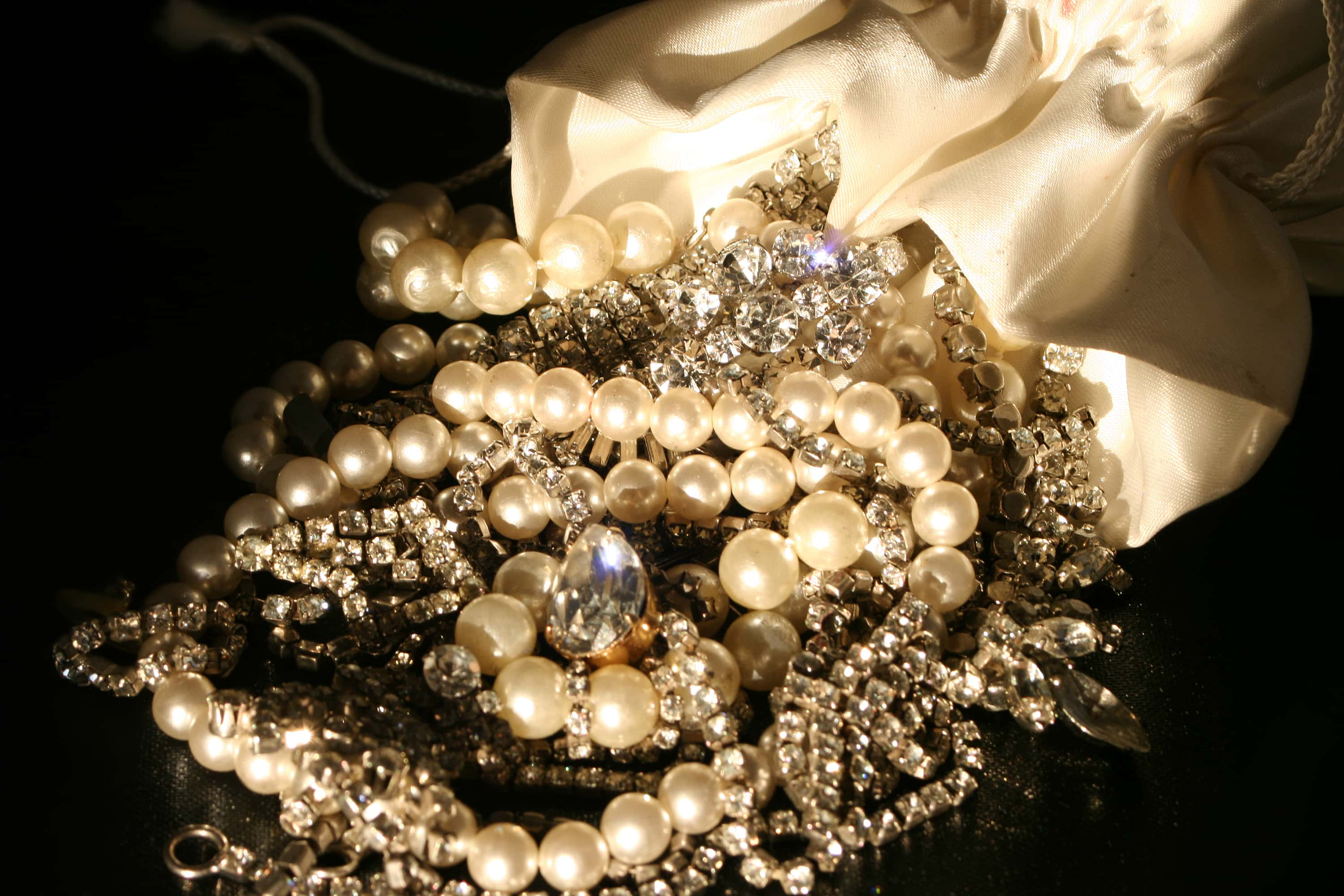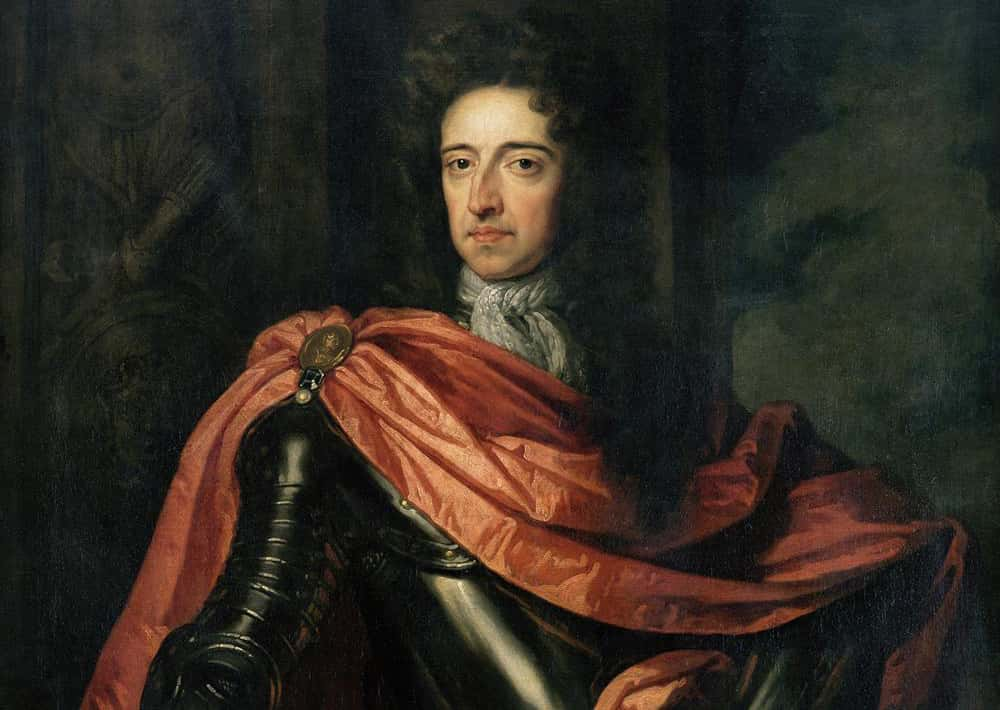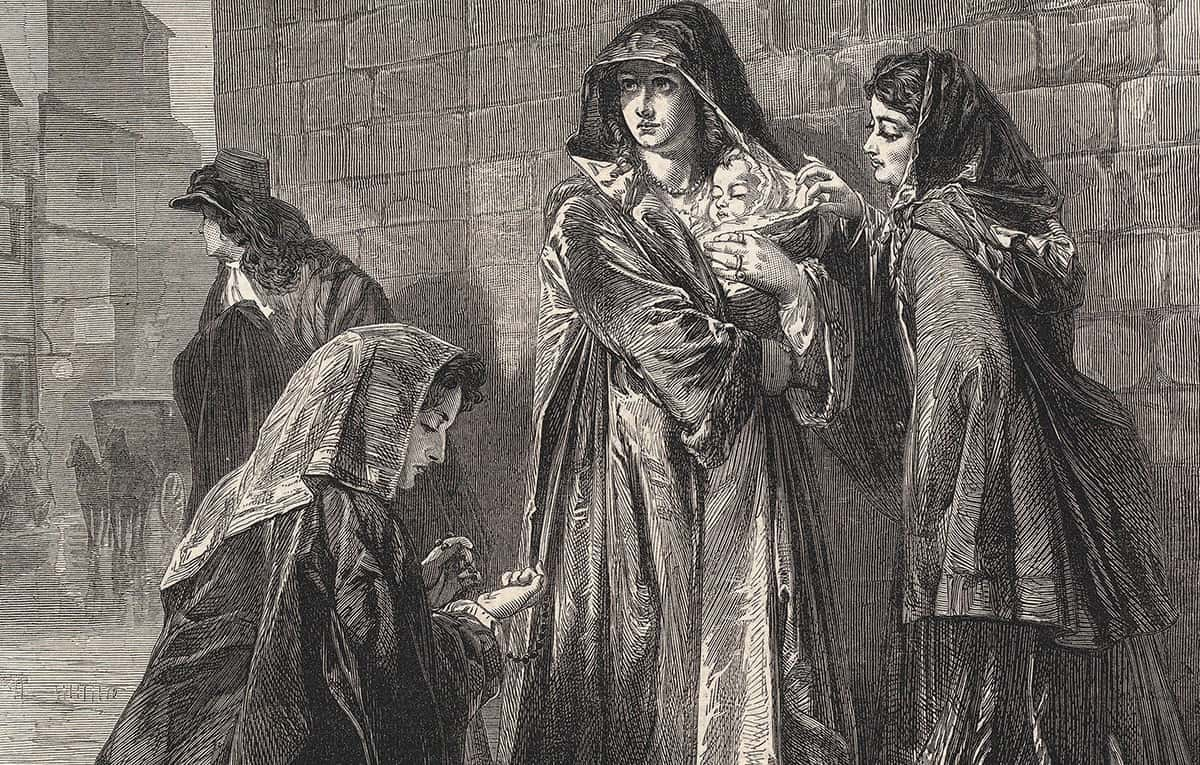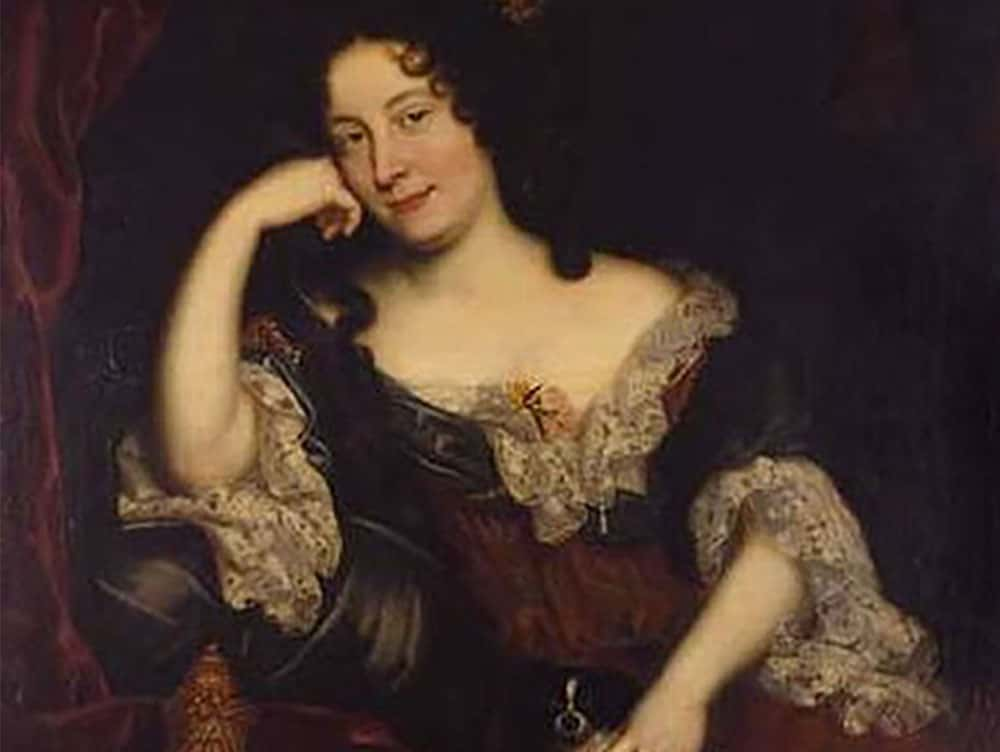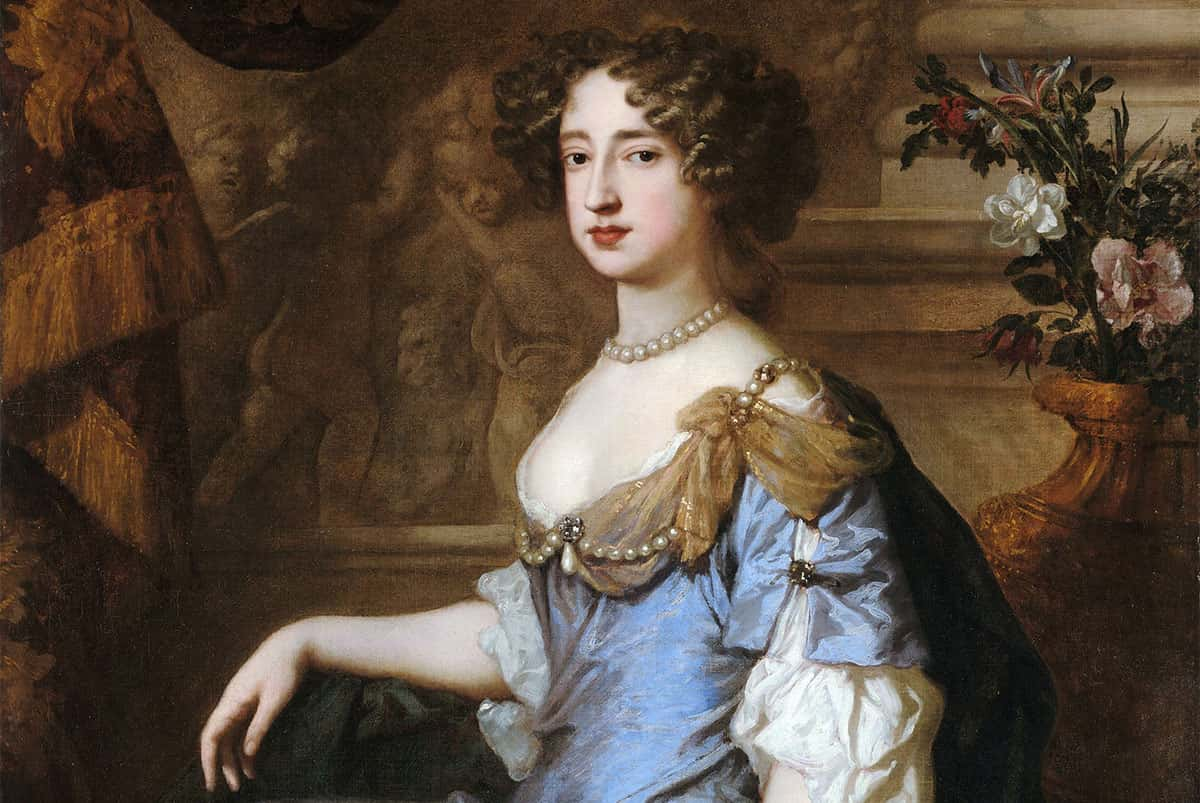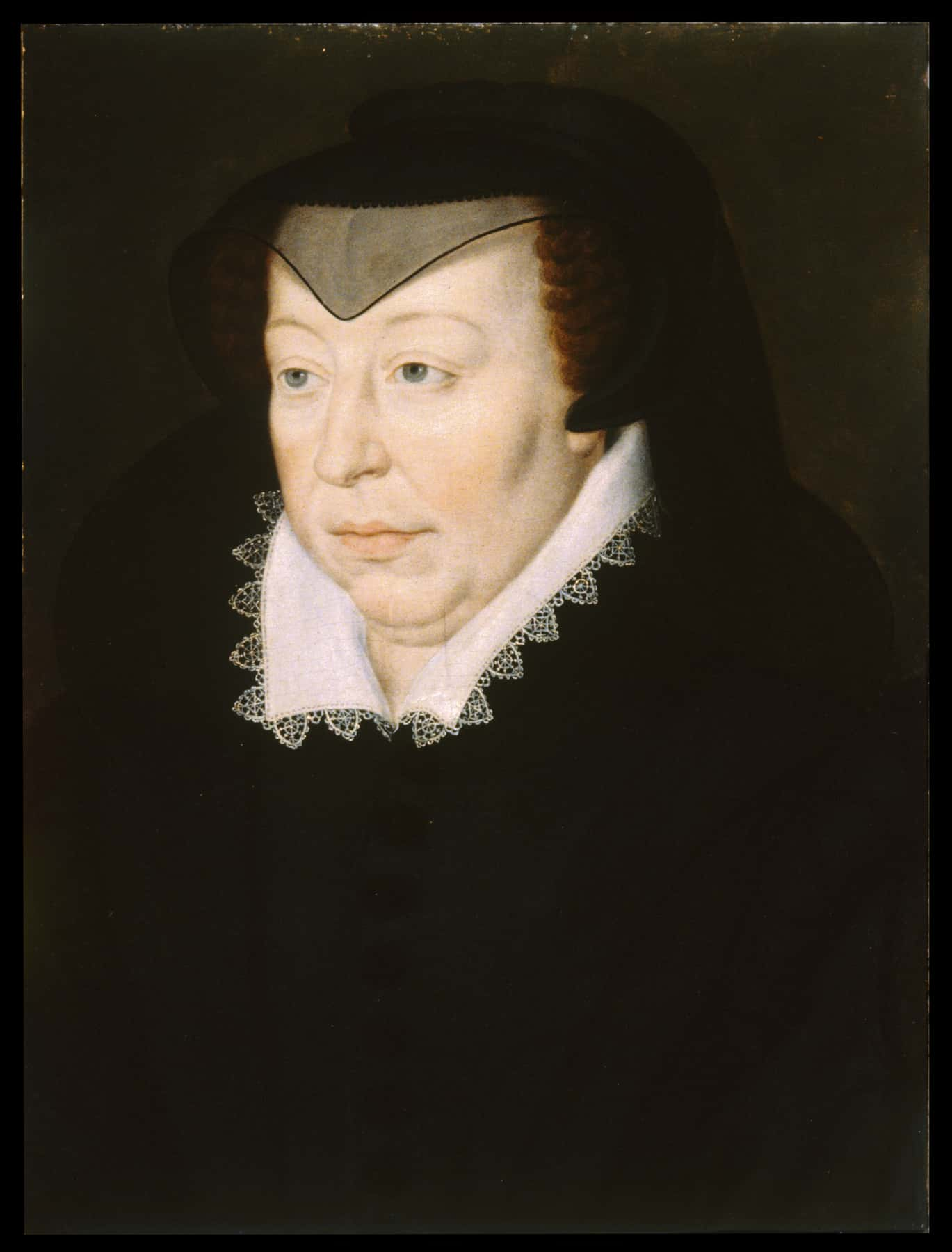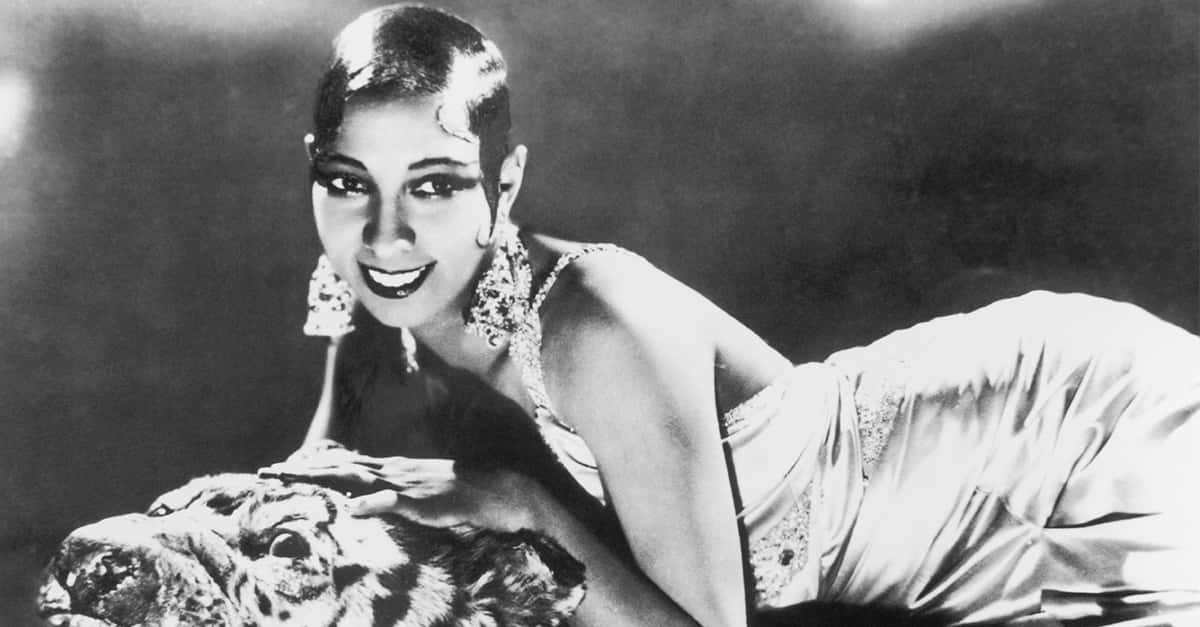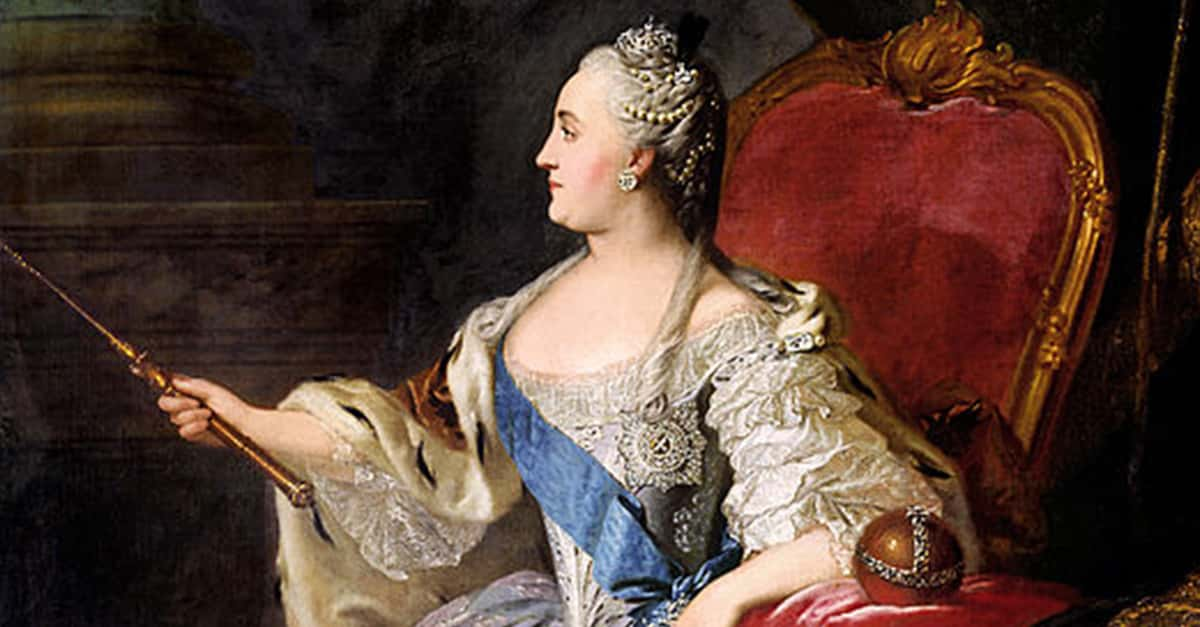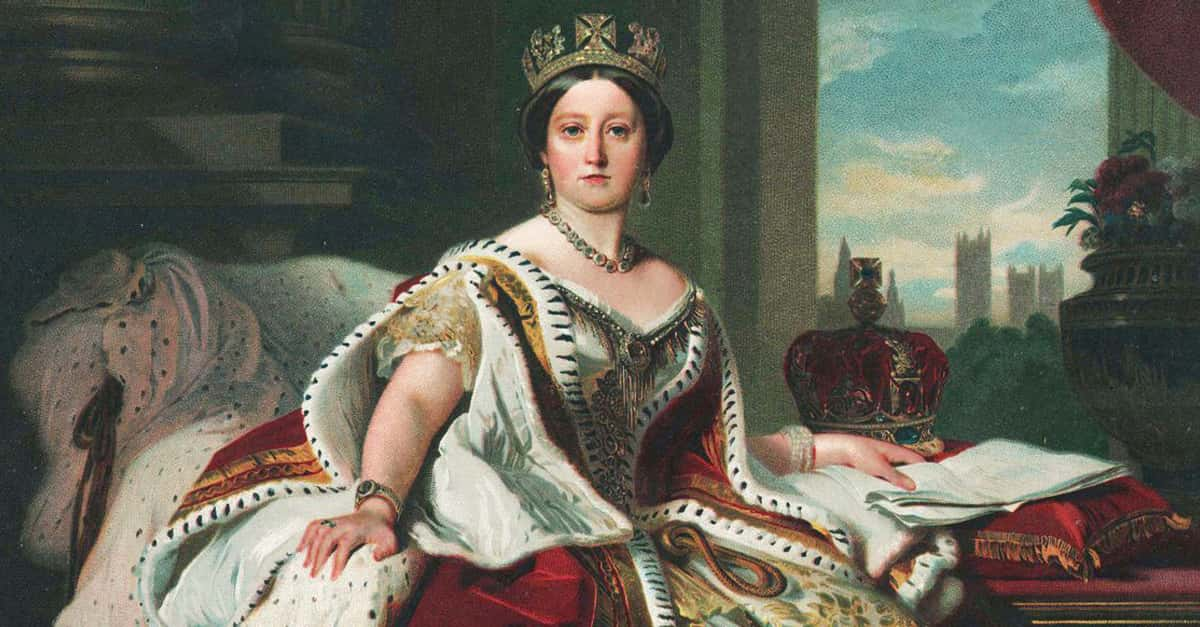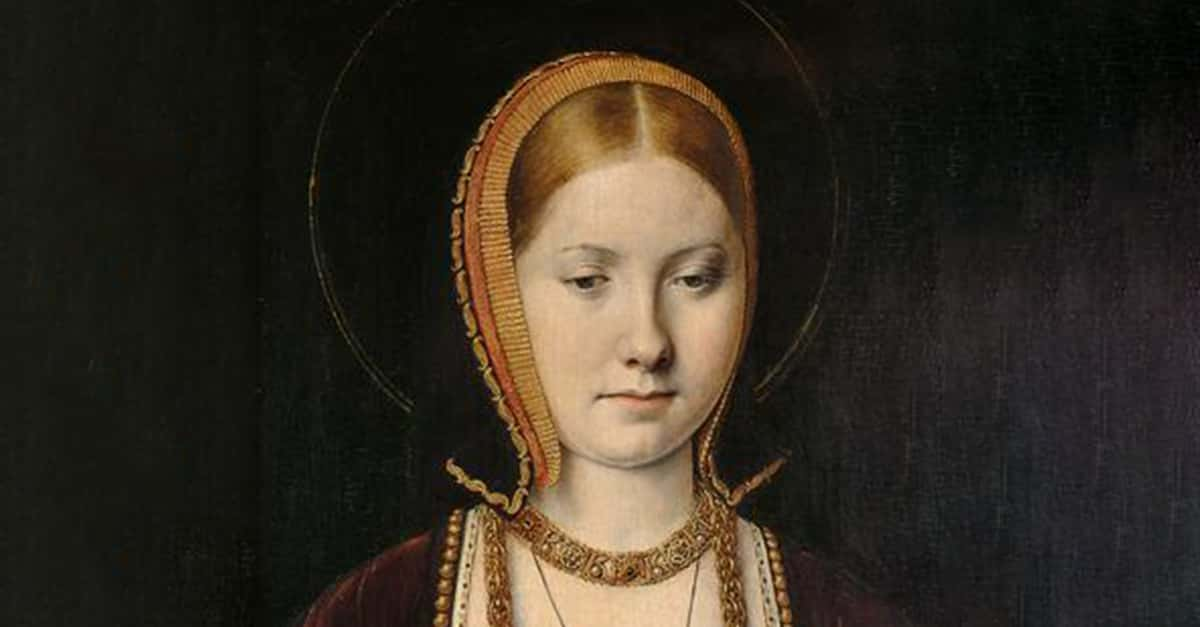Meghan Markle may be a gossip magnet today, but it was Mary of Modena who practically invented royal scandal. The wife of King James II of England, Mary’s “fairy tale” life was actually full of shameful secrets, bitter exile, and a pregnancy that rocked an entire nation. Hold onto that crown—you don’t want to suffer Mary’s fate.
1. Her Family Was Powerful
Mary of Modena was born into a world of power, but she’d have to wait a long time to wield some of her own. Born Mary Beatrice d’Este in 1658, she was the eldest child of the influential Duke and Duchess of Modena. Still, any inheritance skipped Mary and went right to her younger brother Francesco. That’s okay, though, Mary found a different way to get what she wanted…
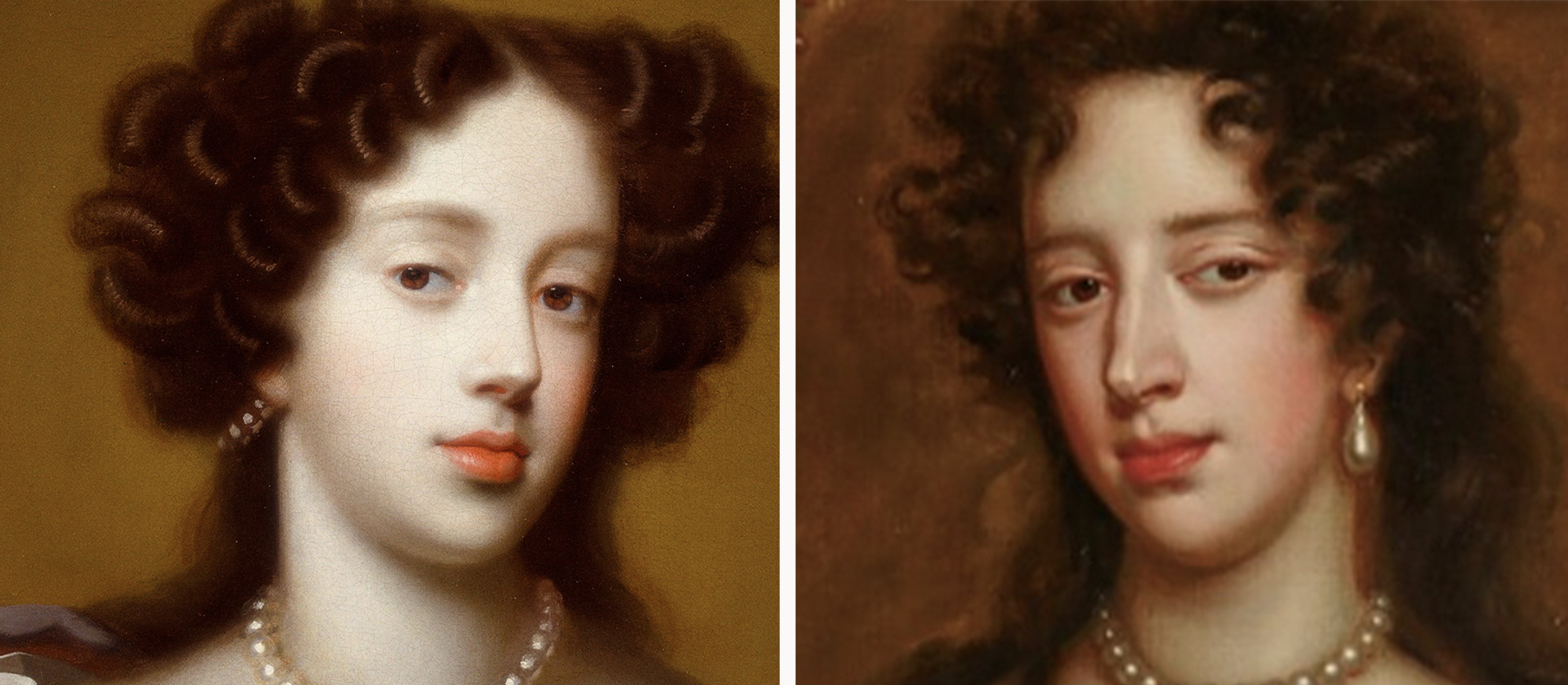
2. She Had Famous Trait
As Mary of Modena grew up, it became clear to everyone around her that she was going to be a gorgeous woman in no time flat. Her contemporaries described her as “tall and admirably shaped,” which is 17th-century speak for “she had a slamming bod.” Well, Mary obviously knew it, too, because she set her sights for a husband very, very high.
3. She Snagged A Big Suitor
Once Mary came of age, James, the Duke of York, started trying to win the beautiful girl’s hand in marriage. This was a huge deal. James wasn’t just the younger brother of the current King of England, Charles II, he was also the king’s heir and the next in line for the throne. Yet the course of royal love never did run smooth.
4. She Had A Huge Ego
Believe it or not, Mary of Modena and her family thought she was too good for James. Mary’s mother Laura Martinozzi thought that they could do better than the heir to the throne, and wanted to see if she could make a “grander” match with Charles II of Spain, who was already a king in his own right. In the end, Mary only accepted James as a consolation prize.
Spoiler: This went about as well as you’d expect.
5. She Was Too Good For Her Fiancé
In truth, James wasn’t exactly the complete package, especially in comparison to Mary’s “hard 10” bad self. The Duke of York was 25 years older than his prospective bride, had already been married once before, and had a face full of smallpox scars—not to mention that he was infamous for his dullness. In other words, Mary was in for a rude awakening.
6. She Didn’t Attend Her Own Wedding
On September 30, 1673, James and Mary married—but the ceremony was bizarre. They married “by proxy,” a common aristocratic practice where either the groom, the bride, or both, didn’t actually attend the ceremony. So to make things even more awkward than they already were, the 15-year-old Mary still hadn’t even met James by the time she wed him. Once she did? Well…
7. She Threw A Fit On Her Wedding Day
Note to self: Don’t marry someone you’ve never seen before. When Mary of Modena finally met James a of couple months later, she did not react well. While James was raring to go with his hot young thing, Mary was so upset by the duke’s lackluster looks, she reportedly burst into tears every time she caught a glimpse of him. Ouch. And if only that were it.
8. Her Husband Was A Serial Cheater
Barely a teenager, Mary was in way over her head when she married James. On the surface, he was a self-serious man—but he hid a disturbing dark side. To put it plainly, the dude was one of the biggest skirt-chasers England had ever seen, and the so-called “most unguarded ogler of his time.” In fact, his bedroom tastes were very strange…
9. Her Husband Had A Bizarre Type
James always had a bevy of mistresses, but his “type” wasn’t so much busty, blonde, and beautiful as it was…totally ugly. Contemporaries roundly insulted his taste in women, with his own brother King Charles saying that the James’s mistresses must have been "given him by his priests as a penance.”
Wow, Mary must have felt special—but soon enough, she was fighting for her life.
 Getty Images Arabella Churchill, one of James' mistresses.
Getty Images Arabella Churchill, one of James' mistresses.

History's most fascinating stories and darkest secrets, delivered to your inbox daily.
10. Her Marriage Was A Dangerous Game
Somehow, James’s bedroom escapades weren’t even the worst thing about Mary’s new nuptials. Her husband had a much more dangerous secret. Some time ago, James had given up his Protestant upbringing and become a Catholic. Seeing as Protestants v. Catholics was the hot-button issue of his time, James had kept his conversion top-secret for over a decade. And then along came Mary.
11. She Earned A Cruel Nickname
See, Mary of Modena and her family were staunchly Catholic, and the minute the Protestant government caught wind of her wedding to James, they blew a gasket. They threatened to annul the marriage, accused her of kick-starting a Papist plot, and even nicknamed her “The Pope’s Daughter,” all of which pretty much blew James’s religious cover. I mean, could this get worse? *laughs nervously*
12. She Was An Evil Stepmother
James had two daughters from his previous marriage, Lady Mary and Lady Anne—and he introduced them to Mary in the worst way possible. When James first brought his teen bride to his daughters, he said (and I quote), “I have brought you a new play fellow.” Surprise, surprise, this gross move didn’t work. While Lady Mary warmed to her, Anne was particularly chilly to her new stepmother. And there were even bigger vipers at court.
13. Her Husband Chose Her Friends
Everyone expected Mary to have a retinue of the best ladies-in-waiting the English court had to offer. Unfortunately for her, James was the one who picked the women. Like sending your man out for table cream and getting back skim milk, one of James’s top picks was Frances Stewart…his brother’s last mistress. Real classy, James.
14. She Had A Gambling Problem
Mary of Modena knew one thing when she came to court: She had to fit in. This had serious consequences. Before long, she had amassed a gambling debt—even though she didn’t like gambling—because her new lady “friends” peer pressured her, telling her that "if she refrained, it might be taken ill.” What are friends for, right? And then the situation went from tense to tragic.
15. She Suffered Brutal Losses
Mary’s one job was to give James an heir, yet it couldn’t have gone worse for young girl. A year into her marriage, Mary was pregnant with her first child, only to suffer a tragic miscarriage. Her next child, a girl named Catherine Laura, got carried to term only to perish months later. It was the beginning of a harrowing pattern—and a streak of very bad luck.
16. She Became A Public Enemy
In 1678, Mary’s world came crashing down around her. The baseless “Popish Plot” broke out, which accused Mary’s own secretary of trying to overthrow King Charles II and put her husband James on the throne, with Mary as his Catholic Queen Consort. The atmosphere was unbearably tense, Mary and her husband were forced into desperate measures.
17. She Was Forced Into Exile
In the aftermath of the “Popish Plot,” Mary of Modena’s reputation took a huge nosedive, and people even began to demand that James be barred from ever taking the throne. Fearing further infamy or even fatal riots, James and Mary fled to Belgium with their tails between their legs. It was not the haven they were hoping for.
18. She Had Friends In High Places
Oh, James and Mary’s Flemish adventure started out well enough. As it happened, James’s daughter Lady Mary had moved up in the world, and she was currently living in Brussels after her marriage to Prince William III of Orange. The exiled royals set up shop there and had a family reunion, but then things got a little too close for comfort.
19. Her Husband Dealt Her A Cruel Betrayal
James had never let matrimony stop him from bedding other women, and he sure as heck wasn’t going to let exile get in his way, either. While in Brussels, the duke continued on a rabid affair with his mistress Catherine Sedley, right in front of a heartbroken Mary…and this affair was even more scandalous than you might think.
20. She Had A Cunning Rival
Catherine, who had actually started as Mary’s lady-in-waiting, was flabbergasted that James even chose her in the first place. The lively but plain girl quipped that, "It cannot be my beauty for he must see I have none. And it cannot be my wit, for he has not enough to know that I have any." Look, it’s canon: Mary’s husband was dull and he had an ugly kink.
21. She Went Through A Mother’s Worst Nightmare
Around this period, Mary of Modena gave birth again, this time to a little girl she named Isabella. At first, it seemed like a miracle—and then it turned into another nightmare. Mary doted on Isabella for nearly five beautiful years, only to have the girl pass in the winter of 1681. It was a crushing blow, and Mary’s reaction was devastating.
22. She Went Insane
Mary didn’t just take Isabella’s premature end badly—she actually went mad, and not even in the usual way. Watching her little girl perish pushed Mary into a religious mania that was so pronounced and sudden, her doctor began to worry for her physical health. But when it rains, it truly does pour…more upheaval was ahead.
23. Her Mother Was A Supposed Assassin
In the days just after Isabella’s passing, Mary had to deal with a plot twist that gave new meaning to the term “family drama.” Someone accused Mary’s own mother of putting out a hit on King Charles II to make way for her daughter’s ascendancy to the throne. Although the rumor was false, it once more stirred the political pot, and no relief was in sight.
24. Her Husband Thought She Was Barren
By summer 1682, the exiled couple made their way back to England so that Mary, pregnant again, could give birth one more time. It turned into the deepest heartbreak yet. Another little girl, Charlotte, passed, and James abandoned “hope that any child of his can live.” Though that seemed like the case, some very strange twists of fate were in store.
25. Her King Nearly Met A Brutal End
Mary and James needed a big win, and 1684, they finally got one—it just came at a high price. That year, the “Rye House Plot,”—this time, an actual plot—tried not only to kill King Charles II, but his brother James as well. When it failed, a bizarre thing happened: For once, the public actually had sympathy for James and Mary. And if you think that’s surprising, hold onto your hats.
26. She Had A Double Coronation
In 1685, after decades of political turmoil, King Charles II passed on, and James and Mary finally got their throne. The really shocking part? No one protested. In fact, the new King and Queen had a lavish double coronation unheard of since the days of King Henry VIII and Catherine of Aragon. On the surface, Mary had achieved her wildest dream nearly overnight. But behind the scenes was a much darker story.
27. She Was At Death’s Door
Our girl was now Queen Mary, Consort of England, but all the glamour and extravagance of her new position couldn’t sweep away the years of heartbreak she had dragged herself through. She had just lost her daughter Charlotte, and she still wasn’t over the death of her beloved Isabella. Mary’s health went into a steep decline…and the court wasted no time betraying her.
28. Her Court Wanted To Replace Her
As courtiers watched their Queen failing, the wolves of Europe went out for blood, and began to immediately plan for Mary’s replacement after her demise. Tackily enough, the Tuscan envoy went back to Italy and assured his boss, Cosimo de Medici, that “general opinion turns in the direction of the Princess, Your Highness’s daughter.”
29. She Ran Away From Her Husband
Thing is, funerals weren't the only problem on Queen Mary's mind. Becoming King hadn’t made James anymore considerate in the bedroom, and he was still carrying on an affair with Catherine Sedley. Horrified and embarrassed, Mary lashed out the only way she knew how. She moved into some brand spanking new apartments in the Palace of Whitehall to get away from her philandering husband.
Only this didn’t quite work out the way she wanted.
30. Her King Humiliated Her
King James obviously knew nothing about women, because he took this opportunity to further annoy his wife. See, Whitehall’s reconstruction was so new and prestigious—famed architect Christopher Wren himself had designed the rooms—that James decided he would receive foreign ambassadors in Mary’s apartments. Buddy, take the freaking hint.
31. Her Rule Was In Danger
As if Mary’s marital troubles weren’t enough, the political heat was back on when it came to her husband’s reign. Surprisingly approximately zero people, James the dullard wasn’t the best ruler, and religious grumblings were growing louder once more by 1686. The situation was so tense, one of the family’s closest allies dealt them a traitorous blow.
32. Her Stepdaughter Spied On Her
Mary’s stepdaughter Lady Mary was still on top of the world in her union with William of Orange—and as it happened, the pair actually had a pretty big claim to the English throne. So as soon as they sensed Mary and James’s rule weakening, the Dutch power couple sent over an envoy to spy on the court under the guise of “friendship.” They didn’t have to wait long for it all to collapse.
33. She Underwent A Strange Ritual
For her part, Queen Mary was desperately trying to hold onto her royal influence, and traveled to Bath in a bid to have the “cleansing” waters help her conceive a healthy heir to the throne at last. In late 1687, she was officially pregnant. The queen was beside herself with joy…but, hate to say it, it was actually the worst thing to ever happen to her.
34. She Gave Birth In Public
On June 10, 1668, Mary gave birth. More than that, she gave birth to a healthy boy, the two best words in the English language according to 17th-century monarchs. She named the child James Francis Edward, showing him off to the group of observers that witnessed every royal birthing ceremony. And this is exactly where the trouble started.
35. England Hated Her Son
Mary of Modena might have been elated to have a son, but Protestants sure weren’t. When James and Mary had been childless, everyone had assumed that his daughter Lady Mary and her husband William of Orange, who were both Protestant, would take the crown. Now, dangit, there was a male, very Catholic heir. The reaction was infamous, absurd, and wholly destructive.
36. She Was At The Center Of A Conspiracy
Instead of believing that Mary had given birth to a healthy heir at last, the English public began to believe something much more sinister: That Mary had secreted in a changeling child from the outside, via a warming pan, after finding out that her babe was stillborn yet again. Although false, these “Warming Pan Baby” rumors dogged the palace for days. And then things really got bad.
37. Her Husband Made A Huge Mistake
We already know that James wasn’t the sharpest tool in the shed, and he made an absolutely fatal error when it came to Mary’s birthing. He refused to allow several high-ranking Protestant enemies into the labor room to affirm the presence of a living baby, giving more credence to the whispers that they’d planned a hoodwink all along.
In fact, even his own daughters, Mary and Anne, believed he’d really switched babies. Enter: Disaster.
38. She Lost Her Crown
I’d love to say that Queen Mary’s reign didn’t end because of a ridiculous conspiracy theory but…I can’t, because it totally did. And the end came swift and brutal. William of Orange and Lady Mary, who had been waiting in the wings for so long, swooped in with their so-called “Glorious Revolution” in 1688, kicking Queen Mary and James off their thrones and back into exile.
But Mary of Modena hadn’t spent her life clawing her way to the top only to give up so easily.
39. She Became The Queen Over The Water
Mary and James took up refuge in France under the protection of King Louis XIV, then watched in envy from the sidelines as England welcomed their new joint rulers, William and Mary. Even so, the royal losers refused to recognize their replacements, set up their own court in exile, and earned the names “The King and Queen Over the Water.” And then they set about causing trouble.
40. The French Adored Her
When Mary posted up in Versailles, she became an instant sensation. Where in England the Protestant public regarded her with suspicion and her inattentive, dull husband barely noticed her good looks or sharp wit, the French were Catholic like Mary—and they knew a thing or two about worshipping beautiful, intelligent women. Then again, this also earned her a powerful enemy.
41. She Had A Rival At Court
While most of the French court fell over themselves for Mary of Modena, King Louis’ daughter-in-law Maria Anna of Bavaria was not on her cheerleading squad in the slightest. Since Mary was technically still a queen, court etiquette dictated that she take precedence over Maria Anna, who did not want to swallow that bitter pill. To get around the humiliation, Maria Anna came up with a cruel plan.
42. She Received A Huge Snub
Instead of rolling up the welcome wagon and rolling out the welcome mat, Maria Anna…simply refused to see Mary of Modena at all. Well, this backfired, big time. King Louis XIV liked Mary as much as everyone else, so he and his wife Madame de Maintenon just started seeing the English queen in secret. As for James in all this intrigue? Well…
43. Her Husband Was Unpopular
While Mary of Modena was the shiny, popular new girl at the French court, the exiled King James was very much not. French courtiers thought he was so boring, they outright excluded him from court entertainments. They often joked that “when one talks to him, one understands why he is here." If only he and Mary had actually stayed put.
44. She Found One Consolation
There was one more shining light in France before Mary and James hit a wall: The birth of their last child, a daughter they named Louise Marie, in 1692. When she was born and once more survived infancy, James believed she was heaven-sent to give them consolation in their pain. Many in the court called her “La Consolatrice” later in her life.
45. She Gave Everything Up For Power
Before long, Mary and James were itching to get back to their rightful throne. The ambition cost Mary nearly everything she had. In order to finance an expedition for James to regain his throne, Mary sold off most of her jewelry and even encouraged her children to give away their pocket money to supporters. For all that effort, though, she only got heartache.
46. They Defeated Her King
In 1690, James suffered a crushing defeat at the Battle of Boyne, and by 1691, the royal couple’s hopes of taking back England were nearly crushed. Mary, though beside herself with anger and grief, clung desperately to any shred of encouragement, even when everyone else in Europe knew that the game was up. And in 1701, it came crashing down for good.
47. She Grieved For Her Husband
In March of 1701, James was taking mass at a French palace when he suffered a massive stroke that left him half-paralyzed. Like so much else in his life, he struggled for months to reclaim his power, only to ultimately lose the battle. By that September, the erstwhile King of England had passed, leaving Mary bereft…and with one final ambition.
48. She Took Power For Herself
Although James wasn’t much of a husband, Mary dressed in mourning for the rest of her life. Likewise, she took up his legacy with a new vigor, helping declare her 13-year-old son James Francis as the new, true King of England—Warming Pan Baby or not—and presiding over his regency council. Yet when her chance came, she blew it.
49. She Was A Helicopter Mom
In 1702, just a year after James’s passing, the “usurper” William of Orange also went to the grave, and the English crown was up for grabs again. Mary had contacts in Scotland who were desperate to put James Francis on the throne, and they wanted her to ship the boy over to boost morale for their uprising. Terrified for her only surviving son, Mary refused—and the uprising failed. It was her last gasp.
50. She Lost Her Children In One Fell Swoop
1712 was the year that Mary’s life fell apart for the final time, and there would be no rebuilding. Facing declining support, France finally expelled Mary’s son James Francis from the country, denying him the throne once and for all. And then it got worse. Mary’s beloved daughter Louise Mary perished that same year from smallpox.
51. She Had A Brutal Downfall
Following these harrowing blows, Mary’s friend Madame de Maintenon described her as “a model of desolation.” And she had much to be desolate about: With all her family dead or gone, Mary now lived in poverty, without so much as a horse to travel by; after all, she had no money to purchase one. All that was left was to pass herself.
52. She Was A “Saint”
After enduring six long years of loneliness, Mary of Modena passed from cancer on May 7, 1718. Although the country she once ruled over nearly forgot her, her passing nonetheless sent a tremor through France, where many remembered her fondly. Her closest friends even mourned Mary as a “saint,” which is high praise indeed.

